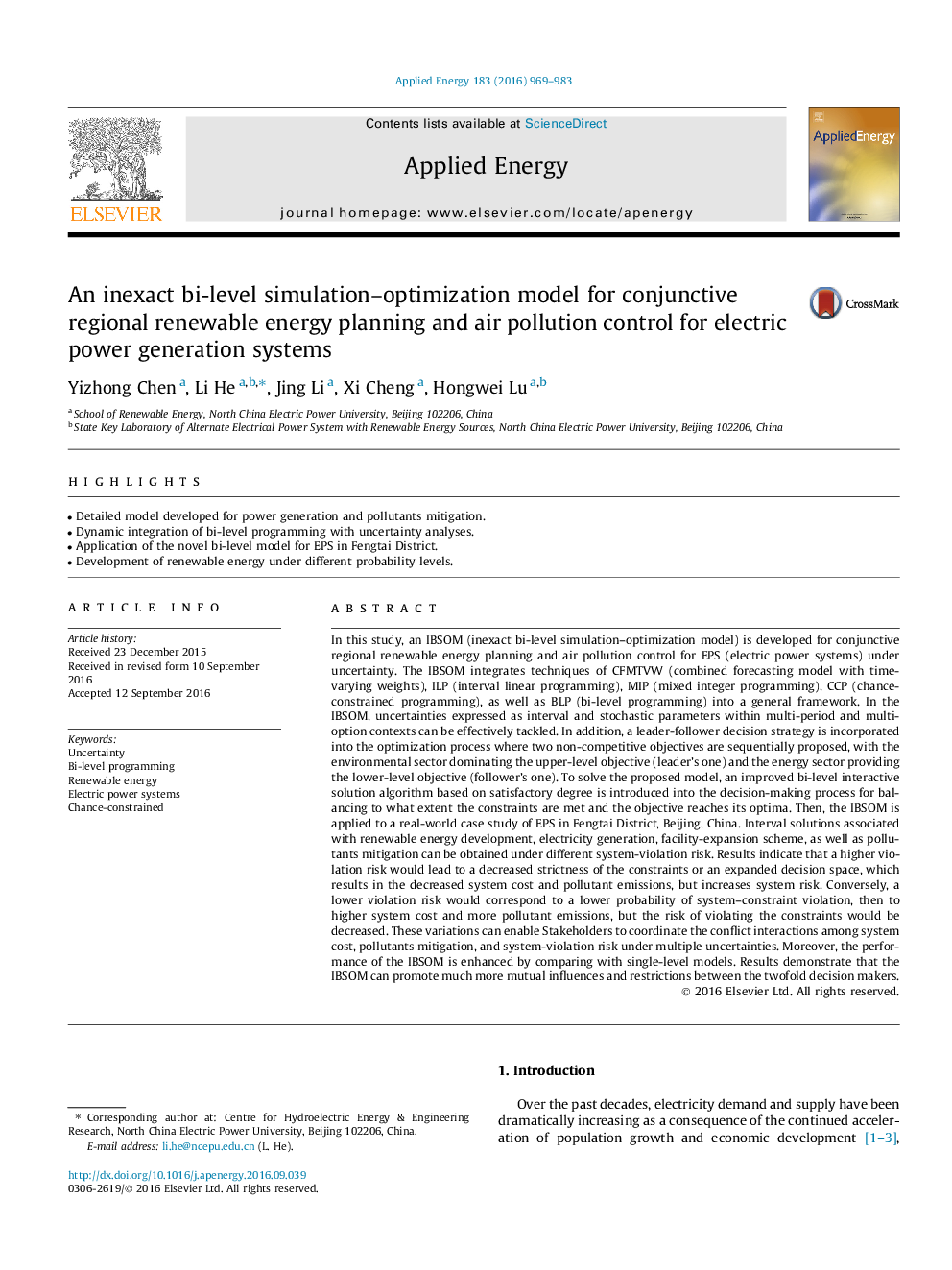| کد مقاله | کد نشریه | سال انتشار | مقاله انگلیسی | نسخه تمام متن |
|---|---|---|---|---|
| 4916627 | 1428105 | 2016 | 15 صفحه PDF | دانلود رایگان |
عنوان انگلیسی مقاله ISI
An inexact bi-level simulation-optimization model for conjunctive regional renewable energy planning and air pollution control for electric power generation systems
ترجمه فارسی عنوان
یک مدل بهینه سازی شبیه سازی دوطرفه غیر منطقی برای برنامه ریزی انرژی تجدید پذیر منطقه ای و کنترل آلودگی هوا برای سیستم های تولید برق
دانلود مقاله + سفارش ترجمه
دانلود مقاله ISI انگلیسی
رایگان برای ایرانیان
کلمات کلیدی
عدم قطعیت، برنامه نویسی سطحی، انرژی تجدید پذیر، سیستم های برق، احتمال محدود،
موضوعات مرتبط
مهندسی و علوم پایه
مهندسی انرژی
مهندسی انرژی و فناوری های برق
چکیده انگلیسی
In this study, an IBSOM (inexact bi-level simulation-optimization model) is developed for conjunctive regional renewable energy planning and air pollution control for EPS (electric power systems) under uncertainty. The IBSOM integrates techniques of CFMTVW (combined forecasting model with time-varying weights), ILP (interval linear programming), MIP (mixed integer programming), CCP (chance-constrained programming), as well as BLP (bi-level programming) into a general framework. In the IBSOM, uncertainties expressed as interval and stochastic parameters within multi-period and multi-option contexts can be effectively tackled. In addition, a leader-follower decision strategy is incorporated into the optimization process where two non-competitive objectives are sequentially proposed, with the environmental sector dominating the upper-level objective (leader's one) and the energy sector providing the lower-level objective (follower's one). To solve the proposed model, an improved bi-level interactive solution algorithm based on satisfactory degree is introduced into the decision-making process for balancing to what extent the constraints are met and the objective reaches its optima. Then, the IBSOM is applied to a real-world case study of EPS in Fengtai District, Beijing, China. Interval solutions associated with renewable energy development, electricity generation, facility-expansion scheme, as well as pollutants mitigation can be obtained under different system-violation risk. Results indicate that a higher violation risk would lead to a decreased strictness of the constraints or an expanded decision space, which results in the decreased system cost and pollutant emissions, but increases system risk. Conversely, a lower violation risk would correspond to a lower probability of system-constraint violation, then to higher system cost and more pollutant emissions, but the risk of violating the constraints would be decreased. These variations can enable Stakeholders to coordinate the conflict interactions among system cost, pollutants mitigation, and system-violation risk under multiple uncertainties. Moreover, the performance of the IBSOM is enhanced by comparing with single-level models. Results demonstrate that the IBSOM can promote much more mutual influences and restrictions between the twofold decision makers.
ناشر
Database: Elsevier - ScienceDirect (ساینس دایرکت)
Journal: Applied Energy - Volume 183, 1 December 2016, Pages 969-983
Journal: Applied Energy - Volume 183, 1 December 2016, Pages 969-983
نویسندگان
Yizhong Chen, Li He, Jing Li, Xi Cheng, Hongwei Lu,
